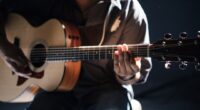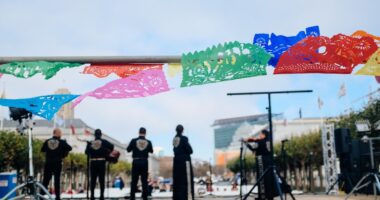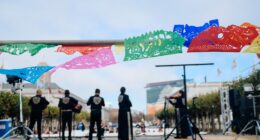In the ever-evolving landscape of the music industry, marketing campaigns have become an essential component for artists seeking to establish their presence and connect with audiences. The digital age has transformed how music is consumed, shared, and promoted, necessitating innovative strategies that resonate with listeners. A successful music marketing campaign not only promotes an artist’s latest release but also builds a brand identity, fosters community engagement, and cultivates a loyal fan base.
As competition intensifies, artists must leverage a variety of channels and techniques to stand out in a crowded marketplace, making the understanding of effective marketing strategies more crucial than ever. The essence of a music marketing campaign lies in its ability to create a narrative that captivates audiences. This narrative can be woven through various mediums, including social media, live performances, and collaborations with other artists or brands.
By crafting a compelling story around their music, artists can evoke emotions and forge connections with listeners that go beyond mere auditory experiences. The integration of technology and creativity in these campaigns allows for a more personalized approach, enabling artists to reach specific demographics and engage with fans on a deeper level. As we delve into the various components of music marketing campaigns, it becomes clear that the synergy between traditional methods and modern innovations is key to achieving success in this dynamic industry.
Key Takeaways
- Music marketing campaigns are essential for promoting an artist or band and their music to a wider audience.
- Social media and influencer partnerships play a crucial role in reaching and engaging with fans.
- Interactive and immersive experiences, such as virtual concerts and AR/VR experiences, can create a deeper connection with fans.
- Targeted advertising and data analytics help in identifying and reaching the right audience for the music.
- Collaborations with brands and events can provide exposure and opportunities for cross-promotion.
Social Media and Influencer Partnerships
Social media has revolutionized the way artists communicate with their fans and promote their music. Platforms like Instagram, TikTok, Twitter, and Facebook provide musicians with direct access to their audience, allowing for real-time interaction and engagement. By sharing behind-the-scenes content, personal stories, and snippets of new music, artists can create a sense of intimacy that fosters loyalty among their followers.
Additionally, social media serves as a powerful tool for building anticipation around upcoming releases or events. Artists can utilize countdowns, teasers, and interactive polls to keep their audience engaged and excited about what’s to come. Influencer partnerships have emerged as a pivotal strategy within music marketing campaigns.
Collaborating with influencers who align with an artist’s brand can amplify reach and introduce their music to new audiences. Influencers often have dedicated followings that trust their recommendations, making them valuable allies in promoting new singles or albums. For instance, an artist might partner with a popular TikTok creator to develop a dance challenge based on their latest track, encouraging fans to participate and share their own videos.
This not only generates buzz around the song but also creates a sense of community among fans who engage with the content. By harnessing the power of social media and influencer partnerships, artists can effectively expand their visibility and cultivate a vibrant fan base.
Interactive and Immersive Experiences

In an age where consumers crave unique experiences, interactive and immersive marketing strategies have gained traction in the music industry. These experiences allow fans to engage with an artist’s work in ways that transcend traditional listening. For example, virtual reality concerts or augmented reality experiences can transport fans into a digital realm where they can interact with the artist’s music in real-time.
Such innovative approaches not only enhance the listening experience but also create memorable moments that fans are likely to share on social media, further amplifying the artist’s reach. Moreover, interactive experiences can take many forms beyond virtual reality. Artists can host live Q&A sessions, virtual meet-and-greets, or even gamified experiences where fans can unlock exclusive content by completing challenges related to the artist’s music.
These initiatives foster a sense of belonging among fans and encourage them to actively participate in the artist’s journey. By prioritizing interactive and immersive experiences, musicians can deepen their connection with audiences while simultaneously generating excitement around their work.
Targeted Advertising and Data Analytics
| Metrics | 2019 | 2020 | 2021 |
|---|---|---|---|
| Impressions | 10,000 | 15,000 | 20,000 |
| Click-through Rate | 2% | 3% | 4% |
| Conversion Rate | 5% | 6% | 7% |
| Customer Acquisition Cost | 50 | 45 | 40 |
In today’s data-driven world, targeted advertising has become an indispensable tool for music marketing campaigns. By utilizing data analytics, artists and their teams can gain insights into listener behavior, preferences, and demographics. This information allows for the creation of highly tailored advertising strategies that reach specific audiences more effectively.
For instance, an artist may analyze streaming data to identify which regions have the highest engagement with their music and subsequently focus their advertising efforts in those areas. This strategic approach not only maximizes marketing budgets but also ensures that promotional efforts resonate with potential fans. Furthermore, data analytics extends beyond just identifying target demographics; it also enables artists to measure the effectiveness of their campaigns in real-time.
By tracking metrics such as engagement rates, click-through rates, and conversion rates, artists can adjust their strategies on the fly to optimize results. This level of adaptability is crucial in an industry where trends can shift rapidly. By leveraging targeted advertising and data analytics, musicians can create more impactful marketing campaigns that drive engagement and ultimately lead to increased sales and streaming numbers.
Collaborations with Brands and Events
Collaborations between artists and brands have become increasingly common in music marketing campaigns, offering mutual benefits for both parties involved. When an artist partners with a brand that aligns with their image or values, it creates an opportunity for cross-promotion that can significantly expand their reach. For example, a clothing brand might collaborate with a musician to launch a limited-edition merchandise line inspired by the artist’s latest album.
This not only provides fans with exclusive products but also introduces the artist to the brand’s customer base, creating a win-win scenario. In addition to brand collaborations, participating in events such as festivals or sponsored concerts can further enhance an artist’s visibility. These events often attract large audiences and provide opportunities for networking within the industry.
By aligning themselves with reputable brands or participating in high-profile events, artists can elevate their status and gain credibility among potential fans. Such collaborations not only serve as promotional tools but also help artists establish themselves as influential figures within the broader cultural landscape.
User-Generated Content and Fan Engagement

User-generated content (UGC) has emerged as a powerful force in music marketing campaigns, allowing fans to become active participants in promoting their favorite artists. When fans create content—be it videos, artwork, or remixes—based on an artist’s work, it fosters a sense of ownership and connection to the music. This organic promotion is often perceived as more authentic than traditional advertising methods because it comes from genuine fans rather than paid endorsements.
Artists can encourage UGC by hosting contests or challenges that invite fans to showcase their creativity while engaging with the artist’s music. Engaging with fans through UGC not only amplifies an artist’s reach but also strengthens community bonds among listeners. When artists acknowledge or share fan-created content on their platforms, it validates the efforts of their supporters and encourages further participation.
This reciprocal relationship cultivates loyalty among fans who feel valued by the artist. By prioritizing user-generated content and fostering fan engagement, musicians can create a vibrant ecosystem where listeners actively contribute to the promotion of their work.
Guerrilla Marketing and Street Teams
Guerrilla marketing tactics have gained popularity in recent years as artists seek unconventional ways to capture attention in crowded markets. This approach often involves creative stunts or unexpected promotional activities that generate buzz without relying heavily on traditional advertising budgets. For instance, an artist might organize a flash mob performance in a public space or create eye-catching street art that features QR codes linking to their latest single.
Such tactics not only surprise audiences but also encourage social sharing as people document these unique experiences online. Street teams also play a crucial role in guerrilla marketing efforts by acting as grassroots ambassadors for an artist’s brand. These dedicated fans help promote new releases by distributing flyers, organizing listening parties, or even engaging with potential listeners at local events.
The authenticity of street teams resonates well within communities, as they often consist of passionate supporters who genuinely believe in the artist’s work. By harnessing guerrilla marketing tactics alongside street team initiatives, musicians can create memorable campaigns that leave lasting impressions on potential fans.
Leveraging Streaming Platforms and Playlists
Streaming platforms have fundamentally changed how music is consumed and marketed today. With millions of songs available at listeners’ fingertips, getting noticed amidst this vast sea of content requires strategic planning. One effective way for artists to gain visibility is by leveraging playlists on platforms like Spotify or Apple Music.
Curated playlists often serve as discovery tools for listeners seeking new music; therefore, getting featured on popular playlists can significantly boost an artist’s streams and exposure. Moreover, artists can take advantage of algorithm-driven recommendations by engaging with listeners through streaming platforms actively. By encouraging fans to save songs to their libraries or share them on social media, musicians can increase their chances of being recommended to new audiences based on listening habits.
Additionally, many streaming services offer promotional tools that allow artists to connect directly with fans through exclusive content or behind-the-scenes insights into their creative process. By effectively leveraging streaming platforms and playlists within their marketing campaigns, musicians can navigate the complexities of modern music consumption while maximizing their reach and impact in the industry.









